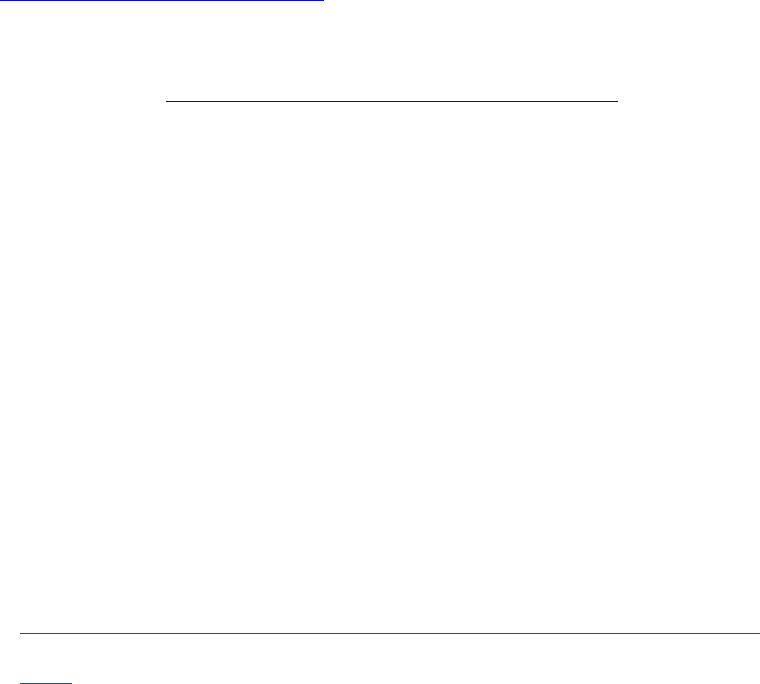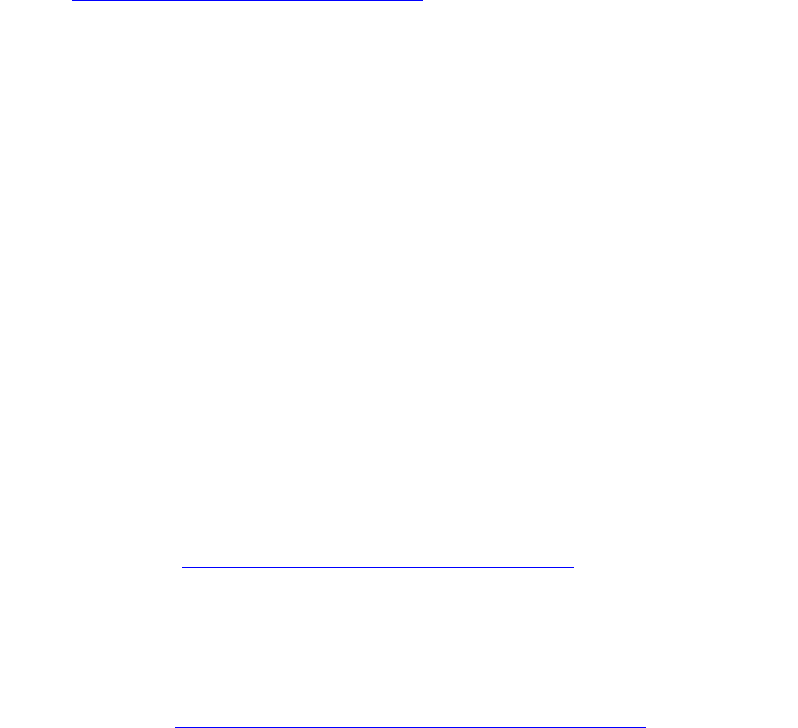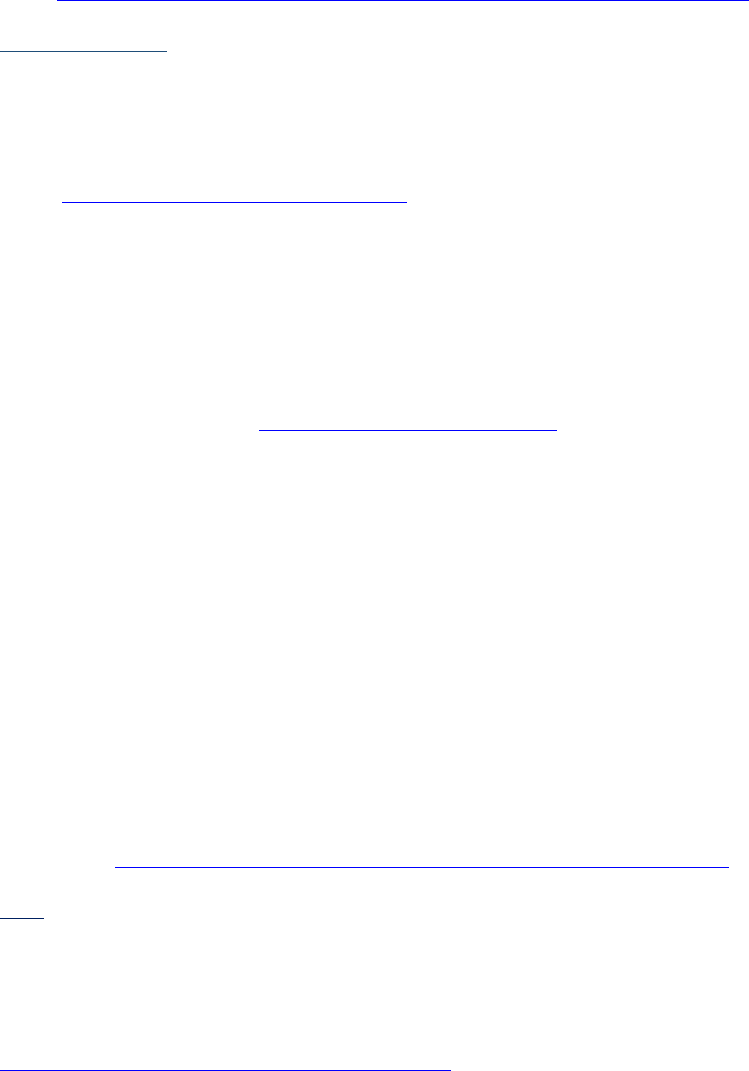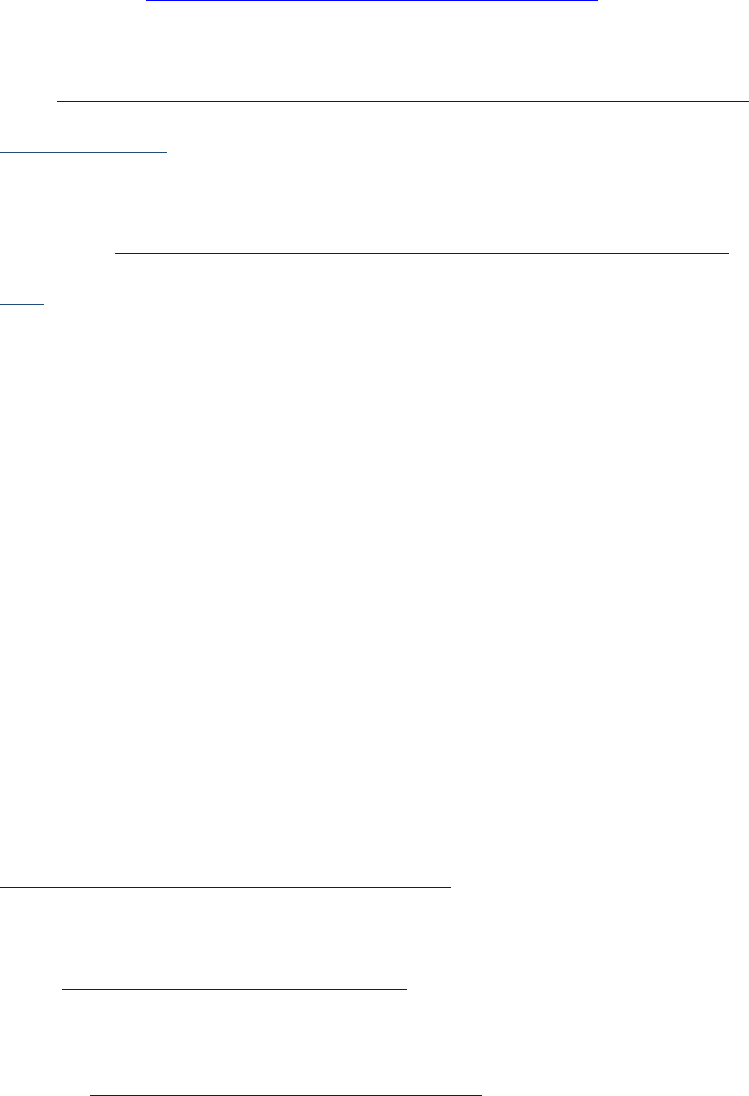1
Using APA Style (7th edition, 2022)
APA style is used in a variety of disciplines including nursing, business, social work, education,
and other behavioral and social sciences. APA values currency of work and thus cites by author(s)
and year (as opposed to MLA, which values authorship and cites by author and page number).
Writers using APA must inform readers not only of authors they are using, but how current/timely
the sources are.
In this handout: APA = 7
th
Edition Publication Manual of the American Psychological Association
Sample papers for both professional (APA pp. 50-60) and student (pp. 61-67) writing can be
found in the APA Manual for your reference.
Additional help can be found at apastyle.apa.org/, Millikin University Writing Center, and, in
Spring 2020, at Purdue Owl.
General Format
The 7
th
edition now offers guidelines specifically for student writing in addition to writing for
publication. See APA 1.10 for discussions of these differences. This style guide is set up according
to APA student guidelines. Nevertheless, always follow the requirements outlined by your
instructor and/or department.
Your manuscript should be typed, double-spaced on standard-sized paper (8.5 X 11 inches), with
1 inch margins on all sides. Do not align the right margin. Double-space text throughout the
paper, and indent all paragraphs one tab (½ inch). Put one space between sentences (see APA 6.1).
Your final manuscript should include, in the order indicated below, as many of the following
sections as are applicable.
• Title page
• Abstract
• Text (Introduction – Method – Results – Discussion, as appropriate; Tables and Figures
may be embedded in-text or presented at the end of the paper before Appendices)
• References
• Appendices
If required by your instructor, pages such as Acknowledgements, List of Tables, List of Figures,
Abbreviations, etc. appear before the Abstract.
Title page: The title page setup depends on whether you are a student or are writing for
publication. See APA 2.3 and Fig. 2.1 and 2.2 for student vs. professional title pages.
APA 7
th
ed. identifies Title Case vs. Sentence Case capitalization. See APA 6.17 for descriptions
and usage of each.
A title should be fully explanatory when standing alone. The words “method” and “results” do not
normally appear in a title, nor should “A Study of” or “An Experimental Investigation of.” Do not
use abbreviations—spell out. The title of the paper appears in bold, centered between the left and
2
right margins, in the upper half of the page, in title case (see APA 6.17). Put four spaces between
the title and author(s) name(s), and double-space the rest of the title page information.
Running heads (see APA 2.8): Running heads are required only for publication/professional
papers. Student papers uses the page number only, flush right at the top of each page. The title
page is page 1.
Abstract: If you are asked to write an Abstract (no more than 250 words), the heading Abstract
will be in bold and centered at the top of p. 2. Type the abstract itself as a single paragraph. Do
not indent the paragraph (see APA 2.9).
Body: Do not begin the body of your paper with “Introduction.” The first part of the manuscript
is assumed to be the introduction. Place the title of your paper, in bold and centered, at the
beginning of your text (see APA 2.27).
Levels of Headings: (see APA 2.27). For most student papers, one to three levels of headings will
be sufficient. Nevertheless, there are five possible levels. The first four levels are set up as
follows (see Table 2.3 in APA for all five levels).
Level 1: Centered, Bold, Title Case Heading
Text begins as new paragraph
Level 2: Flush Left, Bold, Title Case Heading
Text begins as new paragraph
Level 3: Flush left, Bold Italics, Title Case Heading
Text begins as new paragraph
Level 4: Indented, Bold, Capitalize all Major Words, ending with a period. Text
begins on the same line.
Active/Passive Voice: While both active and passive voice are acceptable, passive voice is often
overused. APA recommends that you use active voice as much as possible to create clear, direct,
and concise sentences.
Towards this goal, APA 7
th
ed. allows the use of first person (APA 4.16). When writing the paper
by yourself, use “I;” if collaborative, use “we.” Do not refer to yourself in the third person as
“the/this author” or “this researcher.” Never use “you” unless it’s part of a direct quote. See APA
Table 4.1 for recommended verb tenses for APA papers.
Avoid the editorial “we” when referring to people in general (as in “We live in a multicultural
country”). Use a more specific noun or otherwise clarify.
Use singular “they” and avoid using he/she, him/her, etc. Use he or she only if you are certain of
how the person identifies themselves. See APA 4.16-18.
Seriation: At times, it is necessary to create a list of items. There are differences between using
letters, numbers, or bullets, and whether to use sentences or phrases. See APA 6.49-52 to for
correct formatting and to help you decide which is appropriate for your work.

3
The following are sample pages in APA format. The page number is flush right (running head is
used only for publication work). The title of the paper (in bold) and author are centered between
left and right margins and are placed in upper half of the page. Use four spaces between title and
author. Check with your instructor if you need to add additional information to the title page
and/or format differently.
1
Individual Differences in Bimodal Processing and Text Recall
Student Name
Department
Course (name and number)
Professor
Due date

4
If you do not need to include an Abstract or other introductory pages beyond the Title page, page
2 of your paper may appear as follows. The heading “Introduction” is not used:
2
Individual Differences in Bimodal Processing and Text Recall
A growing body of research has indicated that variations in the electrical activity
from the brain, as recorded by an electroencephalograph (EEG), particularly the
amount of alpha activity, can be used to identify a person’s manner of processing
information, that is, a person’s cognitive style (e.g., Davidson & Schwartz, 1977;
Doktor & Bloom, 1997; Ornstein & Galin, 1976). Much of this research is influenced
by what has been termed the bimodal theory of cognitive processing (Deikman, 1971,
1976; Ornstein 1973 1977). Bimodal theory contends that . . . . [text
continues . . . ]
Method
Participants
Sixty upper division university students (30 women and 30 men, mean age =
21.6 years) volunteered to participate. All participants were strongly right-handed,
as determined by the laterality Assessment Inventory (Sherman & Kulhavy, 1976).
Volunteers were paid for their participation and were treated in accordance with the
“Ethical Principles of Psychologists and Code of Conduct” (American Psychological
Association [APA], 1992). Two passages with approximately the same number of words
were used. The first passage, “Chemical Pesticides,” was a 155-word expository
passage developed by Howell (1980) and based on the work of Meyer and Freedle
(1979). We chose this particular passage because . . . [text continues . . . ]

5
Incorporating Sources into the Text
When using APA format, follow the author-date method of in-text citation. This means that the
author's(s’) last name or name of source, and the year of publication for the source, should appear
in the text. Complete reference information should appear in the References list at the end of the
manuscript.
Paraphrasing: Paraphrase the majority of your sources. The rule is to only directly quote no
more than approximately 10-15% of your sources (see APA 8.23-24). For long paraphrases, you
need not cite each sentence (see APA Fig. 8.4).
Examples:
Falk (2013) claims that the most stigmatized women were unmarried mothers . . .
In a recent study of mental illness (Falk, 2013) . . .
In 2013, Falk discussed mental illness as . . .
For one or two authors, use both names each time you use the source:
Smith and Jones (2018) state that . . .
Smith and Jones (2018) further point out that . . .
For three or more authors, use the first listed author’s last name plus “et al.”
Merriman et al. (2018) found that . . .
The year can be omitted in subsequent citations only when multiple citations of the same source
are used within the paragraph (see APA 8.16); this is for nonparenthetical citations only:
Smith et al. further state that . . .
If no author is given, such as when you are citing an article or web page that lists no author, use
an abbreviated version of the title, in quotation marks, to substitute for the name of the author
(see APA sec. 6.15). Note that the comma goes inside the quotation marks.
A similar study of students learning to format research papers was conducted in 2010 by
J. Webber (“Using APA,” 2014).
No date: If you are citing a work without a date, use the abbreviation n.d. (for "no date"):
In another study of students and research decisions, it was discovered that students
succeeded with tutoring (Merriman, n.d.).
Source (primary) within a Source (secondary) (see APA 8.6): Use this sparingly and locate and
cite the primary source whenever possible. In the text, identify the work you want to use (primary
source), and give a citation for the source from which it came (secondary source). For example, if

6
James C. Dobson’s book (primary source) is used in an article written by Carlin Romano
(secondary source), and you did not read Dobson’s book, list the Romano reference in your
References page. In the text, cite as follows:
An infected person may spread poliomyelitis to others immediately before and up to 2
weeks after symptoms appear (Dobson, 2017, as cited in Romano, 2019).
Or:
In Seidenberg and McClelland's 2009 study (as cited in Coltheart et al., 2012), reading
skills improvement varied considerably under these conditions.
Personal communications, class notes, classic lectures, etc.: Class notes, e-mail messages to
you, intranet sources, or private interviews that you conducted with another person should be
referred to in your in-text citations but not listed in your References list because they are not
retrievable to anyone else. Any work for which a wider audience cannot access the source is cited
in this way. To cite such information in the body of your paper, provide initials and last name of
the communicator, the words “personal communication,” plus an exact date (see APA 8.9).
Example:
No current findings of this result contradict previous studies (E. Gephart, personal
communication, August 3, 2019).
Quotations
If you are directly quoting from a work, you must include the author, year of publication, and the
page number for the reference.
Short quotations: To indicate quotations of fewer than 40 words in your text, enclose the
quotation within double quotation marks. Provide the author, year, and specific page citation in
the text, and include a complete reference in the reference list. Punctuation marks, such as
periods, commas, and semicolons, should appear after the parenthetical citation. Question marks
and exclamation points should appear within the quotation marks if they are a part of the
quotation but after the parenthetical citation if they are a part of your text.
Examples:
Some psychoanalysts speak of illegal “ego-constricting drugs” (Falk, 2013, p. 302),
which have more serious effects than earlier believed.
According to Falk (2013), "A subculture is a group who have had significantly different
experiences from those of most members of any society" (p. 303).
Falk (2013) points out that ancient Greek medicine “holds that the locus of mental
disorders is in the brain" (p. 43), which reflects current day understanding.
Long quotations (block quotes): Place quotations longer than 40 words in a freestanding block
of typewritten, double-spaced lines, and omit quotation marks. Start the quotation on a new line
and indent the whole block ½” from the text above it. Type the entire quotation using the new
margin, and indent the first line of any subsequent paragraph within the quotation five spaces
from the new margin. The parenthetical citation should come one space after the closing
punctuation mark (see APA 8.27).

7
Example:
Falk (2013) points out that:
Because deinstitutionalization places the burden of care on the family[,] this is really a
feminist issue since in our culture women are the prime caregivers for ill persons who remain
at home. This may mean that a woman’s career will be disrupted or destroyed by the chronic
mental illness of a family member. (p. 53)
Note: In a blocked quote, set off any quote within the blocked quote with double quotation marks.
Acronyms
In text, when first using an acronym, spell out the full name of the organization, followed by the
acronym and year in parentheses. If the source is not mentioned in the text, spell out the full name
in parentheses, followed by the acronym in brackets, then the year. After this, the acronym can be
used (see APA 8.21).
Examples:
According to the World Health Organization (WHO, 2019), . . .
. . . these numbers have continued to increase (WHO, 2018).
The number of such births rose in 2014 (World Health Organization [WHO], 2018).
In the References section, spell out the full name. Do not include the acronym:
World Health Organization. (2019). International statistical classification of diseases and
related health problems (11
th
ed.). https://icd.who.int/
8
The References List
The References list appears immediately after your paper. It provides the information necessary
for a reader to locate and retrieve any cited information in the body of the paper. Each source
cited in the paper must appear in the References list; likewise, each entry in the References list
must be used and cited in the text.
Your References page(s) should begin on a separate page from the text under the label
References, in bold, centered at the top of the page. The Reference page(s) should be double-
spaced and use hanging indentation, with pagination continued following the last page of the
paper because it is considered a part of the text.
Basic Rules
1. All authors' names are inverted (last name first); give the last name and initials for all
authors of a particular work. If an author uses more than one initial, place one space
between each initial (example: Jones, N. H.).
2. The References list is alphabetized by authors' last names or corporate/organization
names. If no author is given for a particular source, alphabetize using the title of the
work, which will be listed in place of the author. Alphabetize by the first major word in
the titile (no “A,” “The,” etc.). Use a shortened version of the title, in quotes, for
parenthetical citations.
3. List surnames and initials for up to 20 authors. When authors number 21 or more, include
the first 19 names, followed by an ellipses (but no ampersand), and then the final author’s
name. See APA 10.01, example 4.
4. Personal communications or other nonretrievable information are not cited in your
References. However, you do need to make reference to these sources in your in-text
citations.
5. If you have more than one work by a particular author, order them by publication date,
starting with the oldest (a 2016 article would be listed before a 2018 article).
6. When an author appears both as a sole author and, in another citation, as the first author
of a group, list the one-author entries first.
7. Use "&" (ampersand) instead of "and" when listing multiple authors of a single work
(also used in in-text parenthetical citations).
8. All lines after the first line of each entry in your References list should be indented one-
half inch/five spaces from the left margin. This is called hanging indentation.
9. Do not include the URL for any source that is readily accessible (Academic Search
Complete, CINAHL, ERIC, etc. or any library subscription service). See APA 9.30, p.
297. Use DOIs whenever given.
10. You can use either the default setting for hyperlinks (usually blue font, underlined), or
plain text (no blue or underline). Choose one and be consistent throughout. See APA 9.35.

9
11. As a rule, do not use “Retrieved from” either for a DOI or a URL; simply provide the
link. However, for sources that are unstable or change over time (e.g. websites that
update frequently, etc.), a retrieval date is used, placed before the URL:
Retrieved October 11, 2020, from https://xxxxxx
12. Always use the current format for citing a DOI, even if the source uses the old form:
Correct format example: https://doi.org/10.1037/a0040251
Below are examples for some of the most commonly cited types of sources. If your particular
source is not listed below, go to Millikin’s Writing Center for help, check the 7
th
edition of the
APA Publication Manual, or consult the APA style website at http://www.apastyle.org/
Fixed Media Sources
1. Journal article, one to two authors
Johnson, M. K. (2013). Investigating the relationship of nutrition- and exercise-
compromising health impairments with Autism Spectrum Disorders among children with
special health care needs. American Journal of Health Education, 44(4), 221-8.
2. Journal article, three to 20 authors
Grady, J. S., Her, M., Moreno, G., Perez, C., & Yelinek, J. (2019). Emotions in storybooks: A
comparison of storybooks that represent ethnic and racial groups in the United States.
Psychology of Popular Media Culture, 8(3), 207–217.
parenthetical: (Grady et al., 2019)
narrative: Grady et al. (2019) . . .
3. Journal Article 21 or more authors
For a work with up to 20 authors, include all of the names in the reference. When the work has 21
or more authors, include only the first 19 names, an ellipsis (but no ampersand), and the final
name (see this guideline in the fifth and sixth bullets in Section 9.8 of the Publication Manual and
Example 4 in Chapter 10):
Wiskunde, B., Arslan, M., Fischer, P., Nowak, L., Van den Berg, O., Coetzee, L., Juárez, U.,
Riyaziyyat, E., Wang, C., Zhang, I., Li, P., Yang, R., Kumar, B., Xu, A., Martinez, R.,
McIntosh, V., Ibáñez, L. M., Mäkinen, G., Virtanen, E., . . . Kovács, A. (2019). Indie pop
10
rocks mathematics: Twenty One Pilots, Nicolas Bourbaki, and the empty set. Journal of
Improbable Mathematics, 27(1), 1935–1968.
4. An article with no author or editor named
HIV treatment reduced risk for malaria recurrence in children. (2012). Infectious Disease
News 25(12), 41-43.
parenthetical: (“HIV Treatment,” 2012)
NOTE: For parenthetical citations of sources with no author named, use a shortened version of
the title instead of an author's name. Use quotation marks and italics as appropriate. For example,
parenthetical citations of the source above would appear as follows: ("HIV Treatment," 2012).
5. An anonymous author
When an author is not named, begin the citation with the source title followed by the rest of the
required citation information. If, and only if, the the source is signed “Anonymous,” use
“anonymous” as the author.
6. Corporate author
Spell out the full name of a group or corporate author. If the publisher and the author are the
same, omit the publisher reference to avoid confusion.
American Psychiatric Association. (2002). Practical guidelines for the treatment of
patients with eating disorders (2
nd
ed.). Washington, DC.
7. Book
In 7
th
ed., place of publication is no longer used.
LeFever Kee, J., Hayes, E. R., & McCuistion, L. E. (2015). Pharmacology: A patient-centered
nursing process approach. Elsevier/Saunders.
8. Chapter in a book
LeFever Kee, J., Hayes, E. R., & McCuistion, L. E. (2015). A nurse’s perspective of
pharmacology. In J. Jones (Ed.) Pharmacology: A patient-centered nursing process
approach (pp. 105-133). Elsevier/Saunders.
11
9. Translated work and/or a republished work
Laplace, P. S. (1951). A philosophical essay on probabilities (F. W. Truscott & F. L.
Emory, Trans.). Dover Books. (Original work published 1814)
NOTE: When citing this work in text, both dates are used: (Laplace, 1814/1951).
10. Work discussed in a secondary source (see Source within a Source in this handout)
Romano, C. (2008, August 1). For marriage, the honeymoon’s over. The Chronicle of
Higher Education, p. B5.
11. Government publications
These vary widely and are covered in APA 10.4.
12. Magazine article
Anderson, M. (2018). Getting consistent with consequences. Educational Leadership, 76(1), 26-
33.
13. Newspaper article
(no author)
The complicated calibration of love, especially in adoption. (2018, November 28). Chicago
Tribune, p. 6.
(authored)
Reddy, S. (2014, June 17). Effort to reduce ear surgeries for small children. The Wall Street
Journal, pp. D1-D3.
Electronic Sources
DOI (digital object identifier) and URL
Online content tends to be moved, restructured, or deleted, which results in broken hyperlinks and
nonworking URLs. Thus, scholarly publishers assign a digital object identifier or DOI to articles
and other documents in order to provide a persistent link and maintain retrievability.
• The label “doi” is no longer used. All DOIs are presented as hyperlinks (even if the
article presented the DOI in the older format. Correct form:
https://doi.org/10.1037/a0040251

12
• A DOI may be found in scholarly journal articles, but it may appear with other kinds of
sources as well. Always use the DOI if it is listed.
• If an online work has both a DOI and a URL, include only the DOI.
• No period follows the DOI at the end of the citation.
• The DOI is usually located on the first page of the electronic article. It can also be located
on the Full Record Display Search page of an article or at the end of an article.
• See APA 9.34 for information about when to include DOIs and URLs.
14. With DOI:
Grady, J. S., Her, M., Moreno, G., Perez, C., & Yelinek, J. (2019). Emotions in storybooks: A
comparison of storybooks that represent ethnic and racial groups in the United States.
Psychology of Popular Media Culture, 8(3), 207–217.
https://doi.org/10.1037/ppm0000185
American Psychological Association. (2013). Diagnostic and statistical manual of mental
disorders (5
th
ed.). https://doi.org/10.1176/appi.books.9780890425596
15. Without a DOI:
For works without DOIs that are from most university/academic research databases, do not
include a URL because these works are widely available. Examples of such academic research
databases and platforms include APA PsycNET, PsycINFO, Academic Search Complete,
CINAHL, Ebook Central, EBSCOhost, Google Scholar, JSTOR (excluding its primary sources
collection because these are works of limited distribution), MEDLINE, Nexis Uni, Ovid,
ProQuest (excluding its dissertations and theses databases because dissertations and theses are
works of limited circulation), PubMed Central (excluding authors’ final peer-reviewed
manuscripts because these are works of limited circulation), ScienceDirect, Scopus, and Web of
Science.
For works from websites that don’t have DOIs (excluding the above), include a URL in the
Reference citation.
Stein, M. B., & Taylor, C. T. (2019). Approach to treating social anxiety disorder in adults.
UpToDate. Retrieved September 13, 2019, from
https://www.uptodate.com/contents/approach-to-treating-social-anxiety-disorder-in-
adults

13
16. Online magazine article (not a journal) (APA 10.1 example 15)
Bergeson, S. (2019, January 4). Really cool neutral plasmas. Science 363(6422), 33-34.
https://doi.org/10.1126/science.aau7988
17. Online newspaper article (APA 10.1 example 16)
Guarino, B. (2017, December 4). How will humanity react to alien life? Psychologists have some
predictions. The Washington Post. https://washingtonpost.com/news/speaking-of-
science/wp/2017/12/4/how-will-humanity-react-to-alien-life-psychologists-have-some-
predictions
18. Online reference work (authored/ed.) APA 10.3
Graham, G. (2005). Behaviorism. In E. N. Zalta (Ed.), The Stanford encyclopedia of
philosophy (Summer 2019 ed.). Stanford University. https://plato.stanford.edu/
archives/sum2019/entries/behaviorism/
Zalta, E. N. (Ed.). (2019). The Stanford encyclopedia of philosophy (Summer 2019 ed.). Stanford
University. https://plato.stanford.edu/archives/sum2019/
(no author)
Merriam-Webster. (n.d.). Culture. In Merriam-Webster.com dictionary. Retrieved September 9,
2019, from https://www.merriam-webster.com/dictionary/culture
19. Authored ebook (e.g. Kindle) without a DOI but a nondatabase URL
Christian, B., & Griffiths, T. Algorithms to live by: The computer science of human decisions.
Henry Holt and Co. http://a.co.7qGBZAk
20. Web Pages and Websites (APA 10.16)
If no other reference category fits the source and the source has no other parent or overarching
publication (e.g. journal, blog, conference proceedings), use this category. This will include
online news sources, online magazines, etc. If you cite multiple pages from a website (e.g.
WHO), create a reference for each page. See APA 10.16 for specifics on citing various websites.

14
21. News webpage
Avramova, N. (2019, January 3). The secret to a long, happy, healthy life? Think age-positive.
CNN. https://www.cnn.com/2019/01/03/health/respect-toward-elderly-leads-to-long-
life-intl/index.html
22. Webpage with group author
World Health Organization. (2018, March). Questions and answers on immunization and vaccine
safety. https://www.who.int/features/qa/84/en/
If there is no date, use n.d. in parentheses where date would appear.
23. Webpage on a website with a retrieval date (because the information is designed to change
over time and the page itself is not archived)
U.S. Census Bureau. (n.d.). U.S. and world population clock. U.S. Department of Commerce.
Retrieved July 3, 2019, from https://www.census.gov/popclock
24. Conference Sessions and Presentations
These include paper presentations, keynote addresses, poster sessions, etc. See APA 10.5 and the
templates therein for citing such sources.
25. Television Broadcast
Smithson, I. M. (Producer). (2012, November 1). The nightly news hour [Television
broadcast]. New York: Central Broadcasting Service.
26. Webinar
Goldberg, J. F. (2018). Evaluating adverse drug effects [Webinar]. American Psychiatric
Association. https://education.psychiatry.org/Users/ProductDetails.aspx?activityID=
6172
27. YouTube or Other Streaming Video
University of Oxford. (2018, December 6). How do geckos walk on water? [Video]. YouTube
https://www.youtube.com/watch?v+qm1xGfOZJc8

15
28. PowerPoint presentation or posted lecture notes APA 10.14 example 102)
If the PowerPoint slides come from a class website or Moodle, and you are writing for an
audience that has access to that resource, provide the name of the site and its URL.
Crowe, J. (2020, August 28). Citing in APA style 7
th
edition [PowerPoint slides]. Moodle.
https://munwfile2.millikin.edu
IMPORTANT: This is different from citing your notes from this lecture/class. If you are citing
information from notes you took in class during the PowerPoint presentation, those notes must be
cited as personal communication within your paper because they are not retrievable information.
29. Social Media
At times, it is necessary to cite or pull information from Twitter, Facebook, Instagram, or an
online forum post. If you’ve used social media to discover content, cite it directly—do not
mention that you found it via a social media link. See APA 10.15 for specific examples of how to
cite various social media sources.
The following is a sample References list that illustrates proper format and layout:

16
References
American Psychological Association. (2013). Diagnostic and statistical manual of mental
disorders (5
th
ed.). https://doi.org/10.1176/appi.books.9780890425596
Avramova, N. (2019, January 3). The secret to a long, happy, healthy life? Think age-positive.
CNN. https://www.cnn.com/2019/01/03/health/respect-toward-elderly-leads-to-long-
life-intl/index.html
Goldberg, J. F. (2018). Evaluating adverse drug effects [Webinar]. American Psychiatric
Association. https://education.psychiatry.org/Users/ProductDetails.aspx?activityID=
6172
Grady, J. S., Her, M., Moreno, G., Perez, C., & Yelinek, J. (2019). Emotions in storybooks: A
comparison of storybooks that represent ethnic and racial groups in the United States.
Psychology of Popular Media Culture, 8(3), 207–217.
Johnson, M. K. (2013). Investigating the relationship of nutrition- and exercise-
compromising health impairments with Autism Spectrum Disorders among children with
special health care needs. American Journal of Health Education, 44(4), 221-8.
LeFever Kee, J., Hayes, E. R., & McCuistion, L. E. (2015). A nurse’s perspective of
pharmacology. In J. Jones (Ed.) Pharmacology: A patient-centered nursing process
approach (pp. 105-133). Elsevier/Saunders.
University of Oxford. (2018, December 6). How do geckos walk on water? [Video]. YouTube.
https://www.youtube.com/watch?v+qm1xGfOZJc8
World Health Organization. (2018, March). Questions and answers on immunization and vaccine
safety. https://www.who.int/features/qa/84/en/
Zalta, E. N. (Ed.). (2019). The Stanford encyclopedia of philosophy (Summer 2019 ed.). Stanford
University. https://plato.stanford.edu/archives/sum2019/
